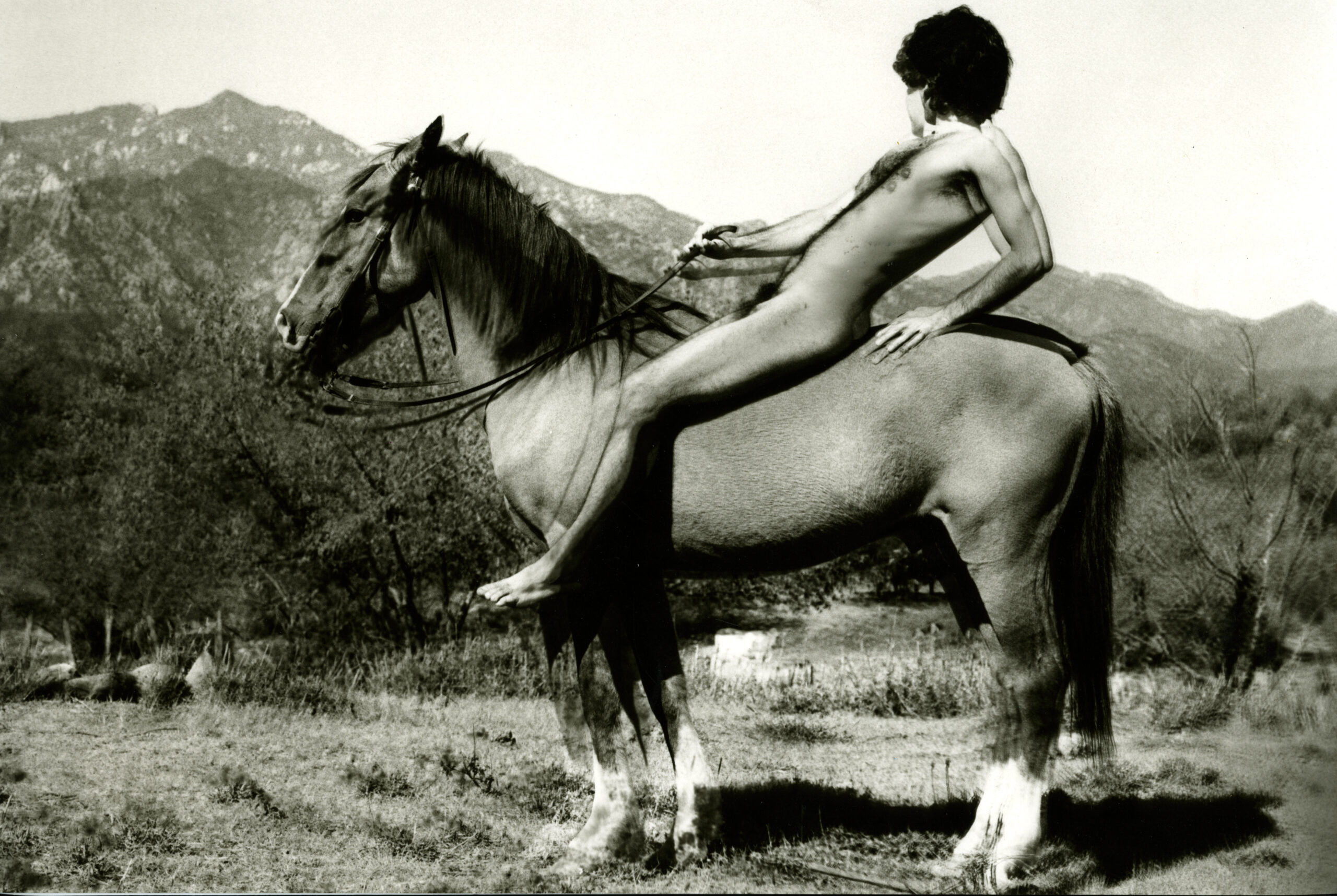
Interview: Philip Tsiaras with Nikos Kontomitros of Madame Figaro, August 2024
Interview | Philip Tsiaras, a truly great Greek poet of Art

With more than 80 solo exhibitions and 17 publications with his works found in the most luxurious and prestigious landmarks worldwide, he, however, remains in love with his poetry and writing. Today, Philip Tsiaras reveals and is revealed exclusively to Madame Figaro.
If you try to decode him from a single lens, you will surely miss a great part of his frankly multifaceted personality. Philip Tsiaras does not fit into any molds. I don’t think he would even prefer them. His truth is the image he faces every time he is inside his atelier. There he confronts the forces against a canvas, on which the poetry of authentic Art is born.
Born near Boston, the most important Greek artist of his generation has held more than 80 solo exhibitions with his temperament composed of an artistic mixture of painting, photography, ceramic and glass art and of course poetry. One could say that Art runs in his blood. And he wouldn’t be wrong. Refusing to limit himself to a single range of media – this is one of the tips he keeps as a talisman from his ten-year association with the leading Greek artist, Lucas Samaras, the talented Mr. Tsiaras counts significant distinctions on his CV with his awards including two National Endowment Grants for Arts and the Generali Assicurazioni Gold Medal for “Civilita” in Venice.
He believes in his strengths, recognizes his natural talent, embraces the romantic version of himself, allows love – combined with his mind – to act as the driving force of his works. His latest retrospective at The Blender Gallery, Tsiaras, Poseidon & The Hyperbolic Horse, puts the horse in the foreground. A creature with whom Philip Tsiaras shares more than one virtue.
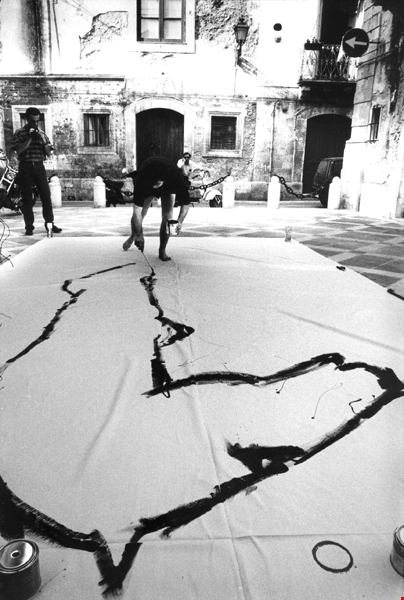
When did this special communication of yours with the horse begin to be cultivated?
It was 1980, young and full of rum, when I was invited to photograph noble horses at a private villa in Mexico. At one point, I decided that I would like to get on a horse, completely naked, and be photographed like a great artist in the Sonoran. My return to New York, still as a photographer, but with an endless appetite to immerse myself in new and different art forms creating my own artistic identity.
What do you admire about the horse?
First, the freedom it exudes. It is tough, muscular and powerful. It is equally noble and elegant. At the same time, it catalyzed world civilizations. The horse has been harnessed as the means of discovery and transportation, the hierarchy of regal animals. It was the channel through which man was able to communicate, subjugate, travel, and to advance in domination over vast areas . Also, my name is Philip, which in complete linguistic decomposition means friend of the horse (laughs).
Is a retrospective a good opportunity for meaningful introspection?
Of course. I’m glad someone is looking at it from that perspective. It is a unique opportunity to reflect on your own journey through the years, to observe your personal movement – like that which the galloping horse gives birth to, to see in practice how much you have changed through experience and the different insights you have received . You can ask yourself from an outside perspective why you took that step at that particular moment in time. But does anyone really know this?
There is also the inspiration of the moment.?
This is very important. When you create a work of Art, it is as if your movements are guided by an invisible force, which you are unable to perceive initially.. There are many times that I have seen my artworks and that I myself cannot understand how or where the inspiration came from. That is kind of spooky.
Is that how you work as an artist?
It depends, Many times when I start writing a text, there always comes that moment (no one can calculate when), which I characterize as point zero. My muse is not a specific subject, but all the stimuli I receive in my daily life. These unanswered questions as to why we do it, is why we do it!
Tell me about some of these…
Eroticism is definitely one. The world is romantic – I hope for most. My temperament is structured in the triptych of Love, Sex and Rock&Roll. Love is the driving force of life.
Are you following your heart?
Yes, but my mind is always present in my every step.
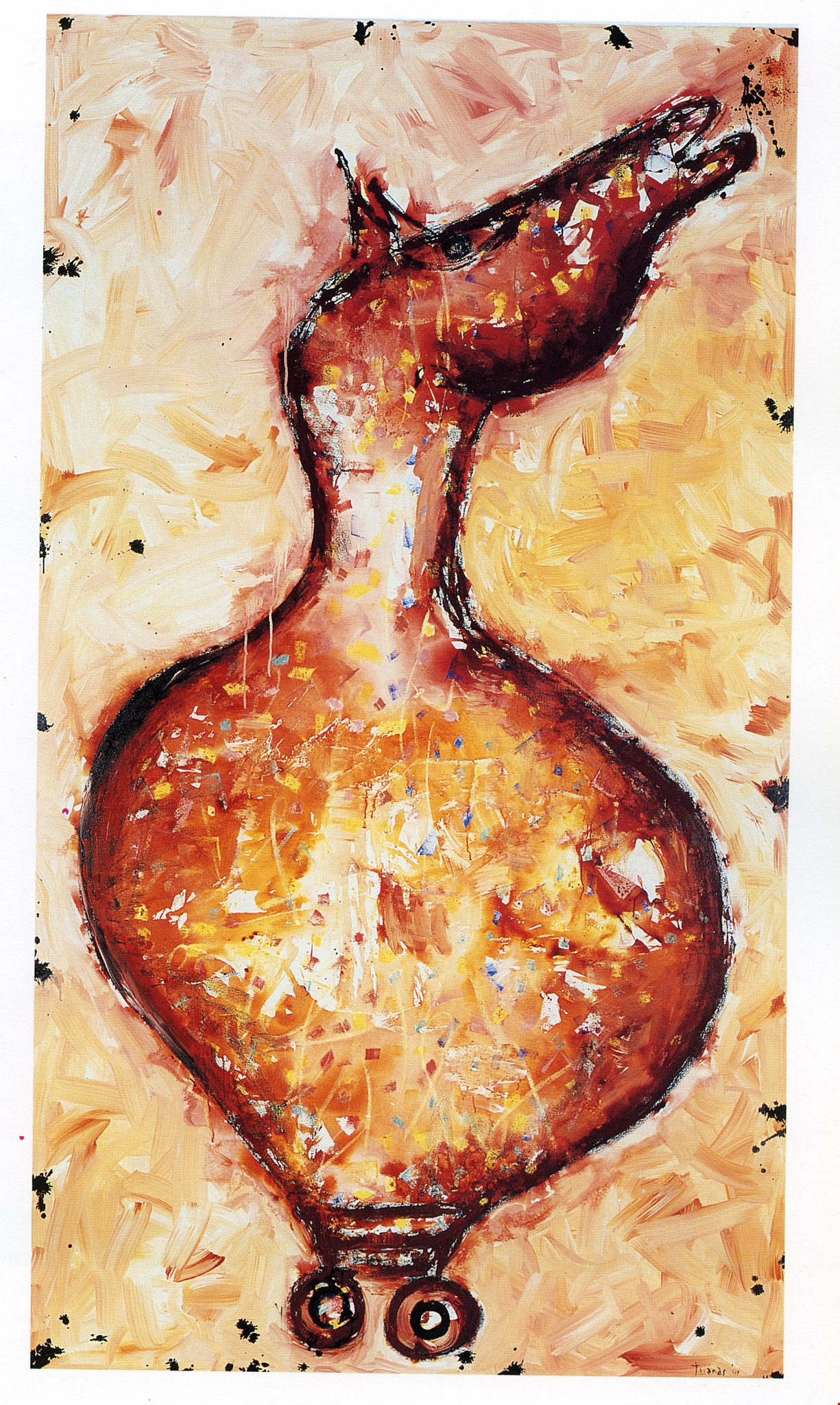
I observe the works of his exhibition with attention. His love of detail is evident. As is his vulnerability to color. He methodically trusts both dynamics and the powerful result vindicates him.
Do you trust color…
I love color. I feel that my visual creation is rich in light. Color is an amorous element for me, with bold hues stimulating the mind. In my worldview, color symbolizes the universe. Without wanting to appear critical of those who work monochromatically, I believe that through color an artist approaches his full expression.
In your eyes, is black a color?
It is synonymous with elegance, initially (laughs). Black fits into its composition thousands of shades of all color. After all, there is also the black hole of the universe.
I do not reject the color black . At the beginning of my career, as a rebellious youth, I used to draw works in darker shades, blacker themes, but now I have decided that life is and needs color.
Do you choose the colors of your works based on your mood at the time?
I think yes. If you’re not happy, you’ll usually do something more aggressive, and more aggressive in visual terms usually means the color black. It’s no accident. Each color harmonizes with an emotion, “resonates” into his temperament.

Of course, a single Art form would not be enough for him. He never sought it. And he wasn’t afraid to expose himself by testing his skills in a diverse range of media. After all, as he himself believes, only this alloy of complexity can give birth to a true modern artist.
You declare yourself a painter, photographer, poet, visual artist. Where do you meet yourself?
This is something that was pointed out to me by Lucas Samaras, with whom I worked for ten whole years. “Never allow yourself to stay in one place, never become too comfortable and easy to read, You can discover the world in one room,” he had characteristically told me. A lesson, which I keep inside and try to apply.
In saying this, your own path is also summed up…
I started as a poet, because I liked to write. Poetry is for me what Karyotakis describes as the refuge that we so seek and at the same time begrudge.
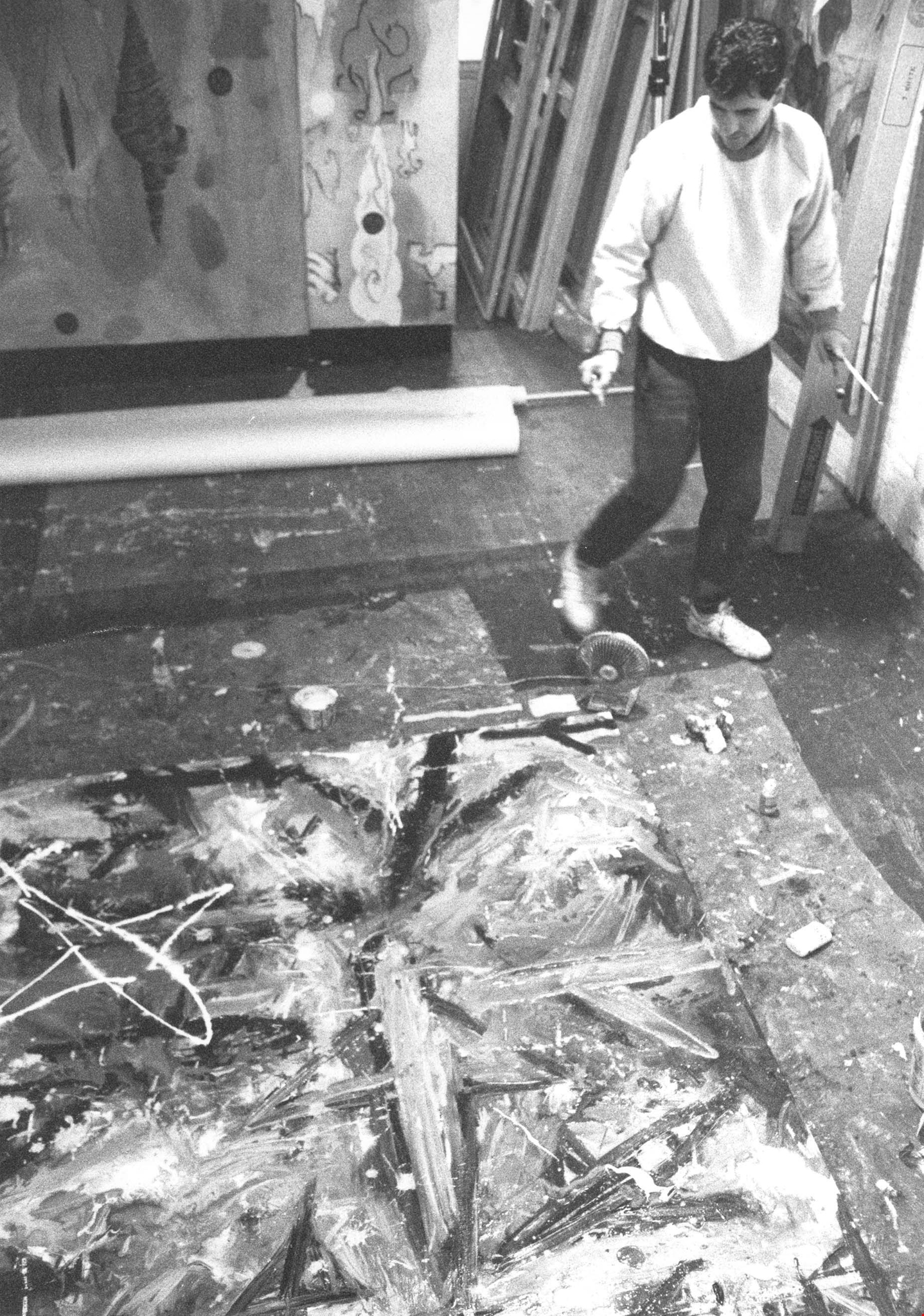
He started as a musician, continued as a poet and painter. 15 days at Columbia University Graduate Schools was enough for me to realize that you don’t need to study creative writing to become a poet after all. “I believe that there you are not taught the feeling and substance that Art and writing require, but you acquire the theoretical background, which, although valuable, does not transform you into a real poet or artist ,” he underlines.
Is Karyotakis your favorite poet?
Yes, one of them. I have also translated him into English. And that was something quite difficult. You had to think a lot about which word exactly you would choose and what meaning you might convey. Karyotakis speaks with a kind of contemporary slang of his time, dark and lovely!
I can imagine that. As in your works, Kariotakis’s poetry is open to a second reading.
Thank you. I’ll take that as a compliment! Nut in translation the challenge is Communicating the idea and the essence, and while keeping the poetry in another language still true to the poet. In the past, I have also translated works by Cavafy into English, but there the semantic line seems more straightforward.
You operate on the spur of the moment. Has this led you to change artworks completely at a later stage?
Interesting question. Sure. Sometimes. But I try to be careful in this process. There are artworks that I really can’t remember how and why they were conceived. Perhaps I even hate them. However, I do not want to alter their essence. They were me then, it is a little like rewriting your past. Believe it or not, some of your dumb things later on can seem genius.
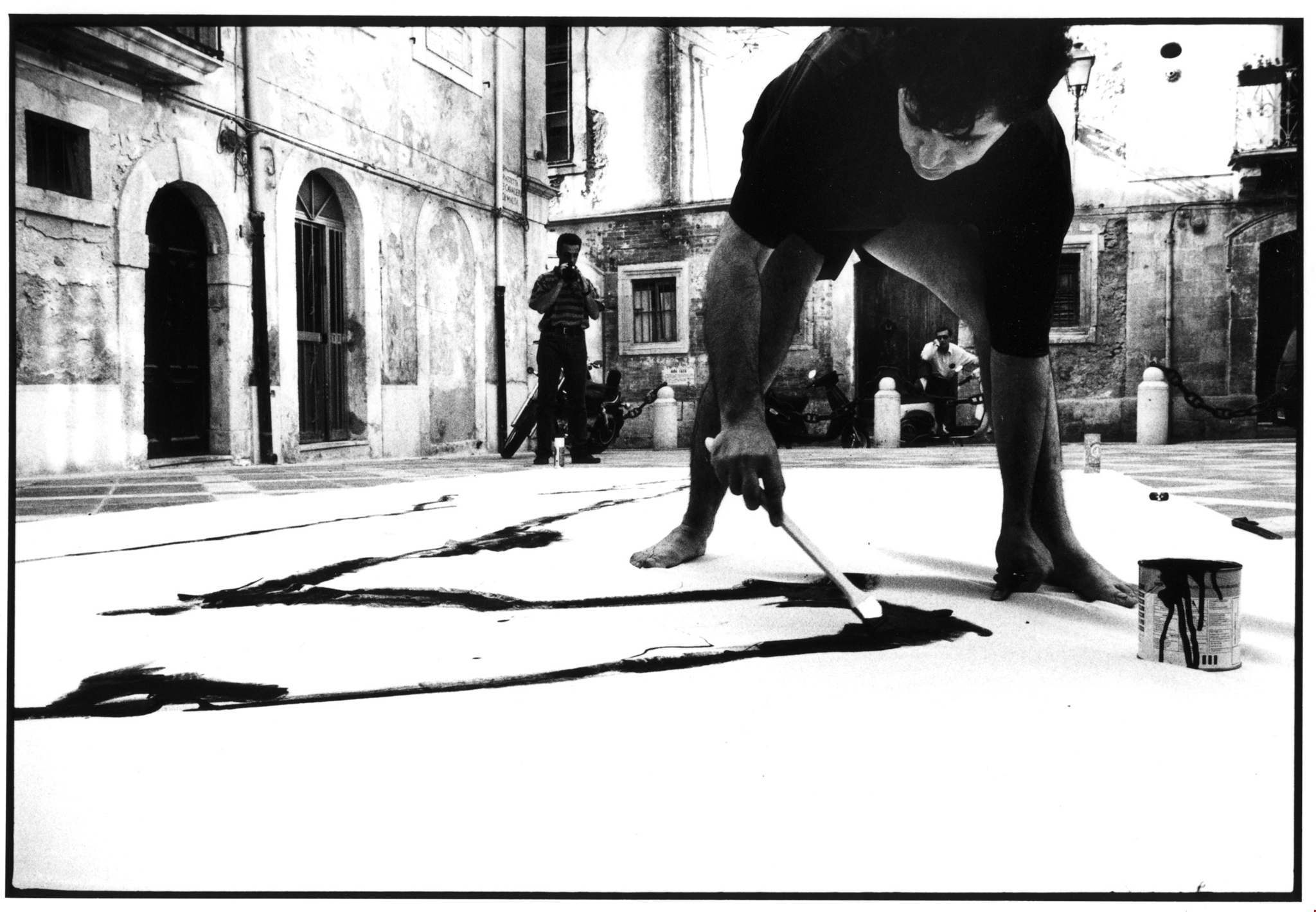
“If you can’t indulge in the humor of yourself, then you’re not authentic, you’re fake ,” he will confide with overconfidence. Personally, I agree. “I have met many international stars abroad and they all had one thing in common: they were surprisingly approachable and humble. The problem starts not with the greats, but with those who try to be and can’t ,” he adds.
Are you a perfectionist?
In writing, yes, which is why it is easier never to finish. (laughter)
And how do you manage to determine when a project is ready?
In poetry, it’s really hard because you feel like there’s always something more you have to offer, subtil changes. In painting, the situation is different. You can make small and large changes, add or remove, between exhibitions. In poetry, you reflect the time you’re writing in – day by day, even the vocabulary you use can change .
And on a practical level, when can something be published?
Deadlines are my salvation (laughs). This pressure may seem unbearable to some, but in my case, it works beneficially. When you have to deliver something, you work differently, with a purpose.
I mean, are you part of the program?
No program really, but I like knowing that I have to do something specific in a certain amount of time. That right now I need to tackle a project or set of projects and deliver it. Creativity is a crazy thing, it can perform with a gun to its head!
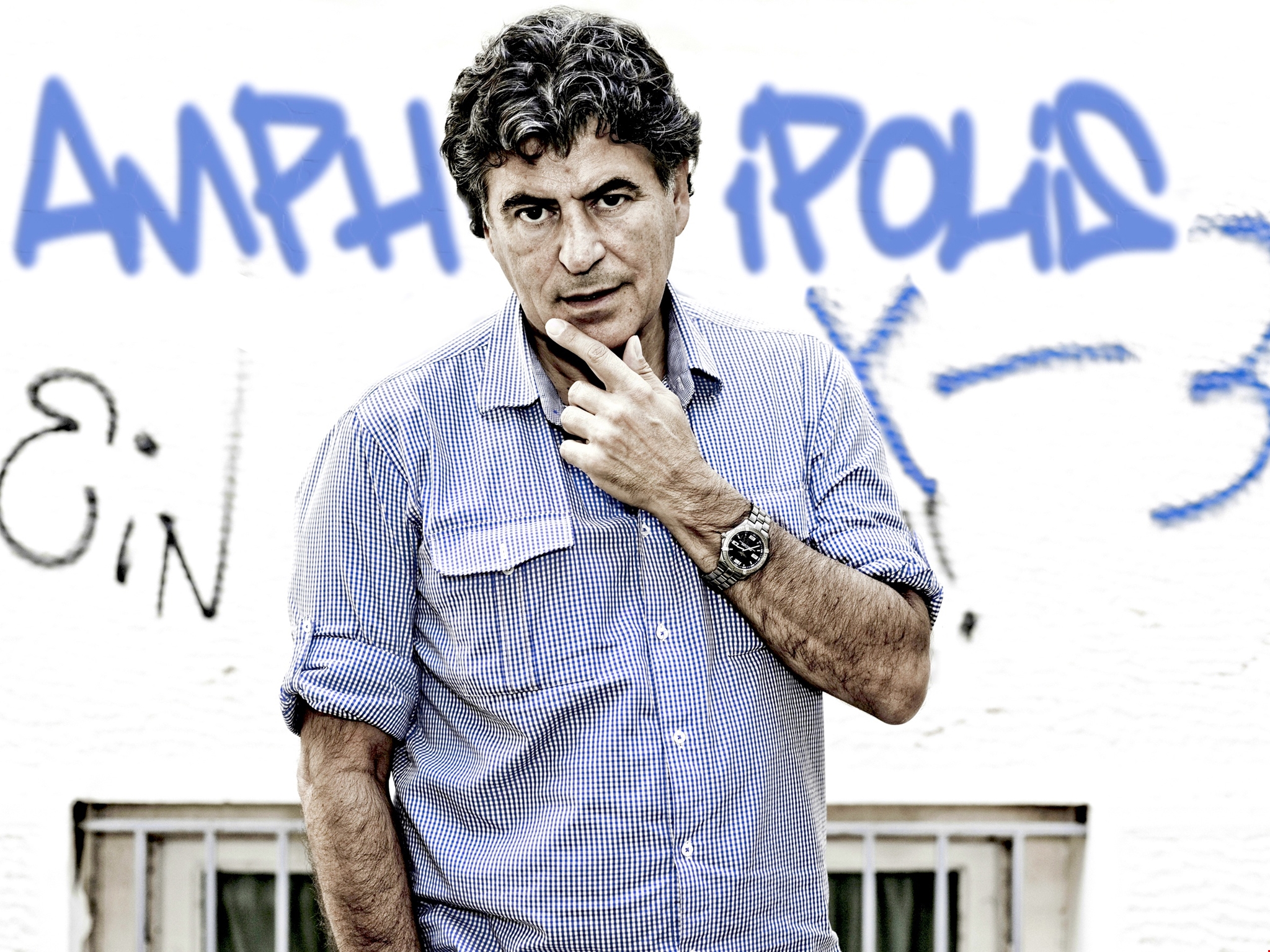
It is important to be able to live and support yourself through your Art. He’s not wrong. He himself has gone from theory to practice.” The first ten years in New York were hard, and dramatic. The struggle is a condition that you eventually learn to embrace and even love, not at the time, but later. And that’s a great victory .”
You mention Lucas Samaras often. What do you keep from your experience of knowing him?
I remained friends with him until his last days. From colleagues, we became friends, which allowed me to get to know him better. Lucas Samaras was a genius, with all the characteristics that this description implies. An inspiring man, but also an extremely difficult one. Artistically he was sparing with the details and information he gave you, but being by his side was a lesson in itself.
Samaras had advised me two things: first, to stay in the center of New York, Manhattan, as the pulse of Art beats there, and second, to live exclusively from the world of your creation, your artwork, however impossible it may seem at first . Because when you are distracted by more than one job, the more you are distracted from your goal. It sets you apart from hobbyists.” They think they’re artists, but they’re not. The less stress there is (i.e. making a living), the less inspiration you end up with. Rejection is part of the natural flow of a creator. I’ve experienced plenty, even and from the great Samaras “.
You are a person who professionally deals with writing and Art, two fields in which AI is currently advancing. From what point of view do you deal with this interference in your fields?
For me, AI is perhaps the small death of Art. I cannot accept that we need a technological construct to create projects of a higher level than our own . Also, given that AI uses specifically existing data, the question of copying or interpolating an artist comes to mind, more of imitation rather than creation . Uniqueness is disappearing, and that’s a scary and a really disturbing thing.Artificial intelligence (AI) is, of course, here to stay . Unfortunately its evolution will inevitably create an even more authentic looking world, that will give birth to compositions seemingly handmade but without the imperfect heart and soul of the human creator. Could be tragic. Please do not clone me!!
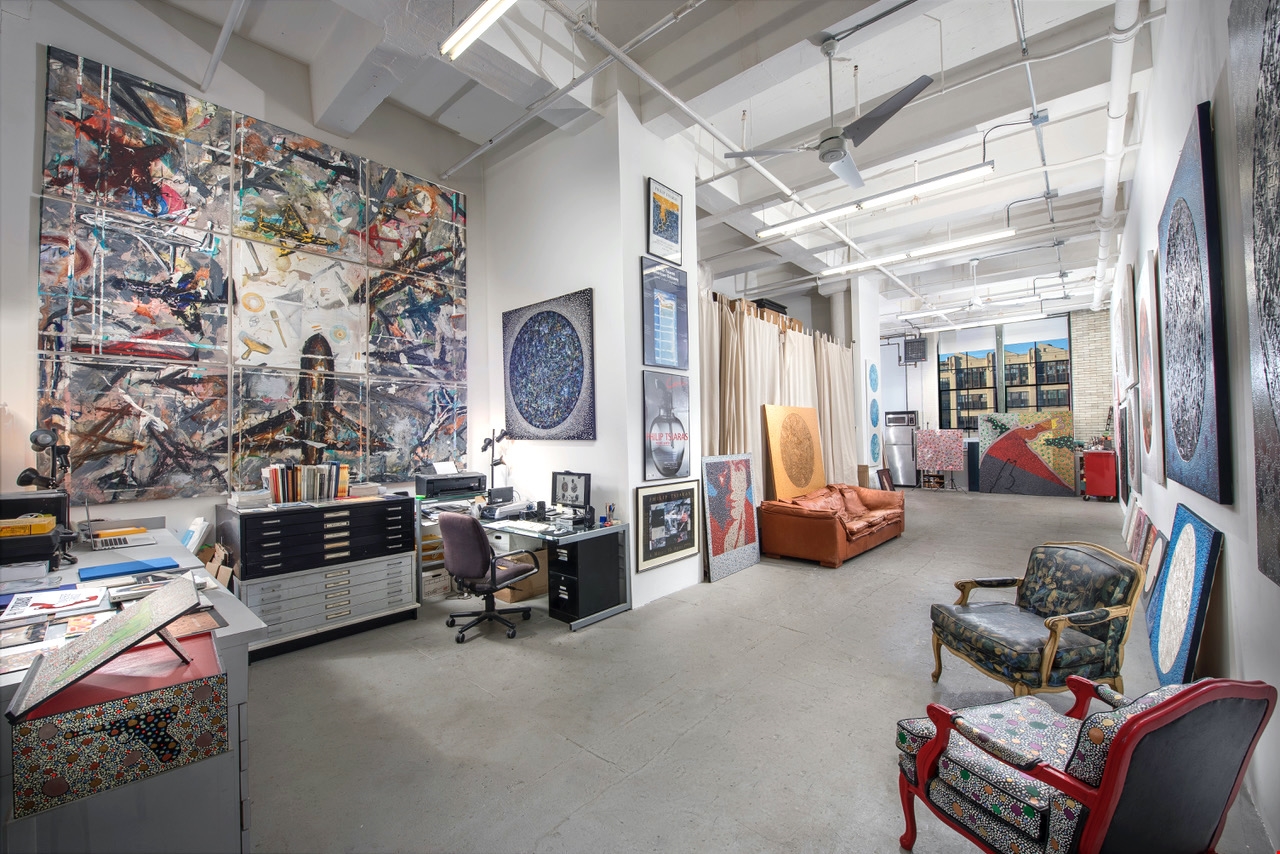
The presence of Philip Tsiaras can be found now in London in a solo exhibition of his paintings at Sotheby’s. He may not be willing to tell us his next professional step, but without question it will lead us to Greek paths of the highest cultural value.


Read recent articles
Athens Voice Interview by Niki Koskina, November 2025
Gala Magazine Interview by Lefteris Tsigkas, August 2024
The SUPERDOT in Thessaloniki